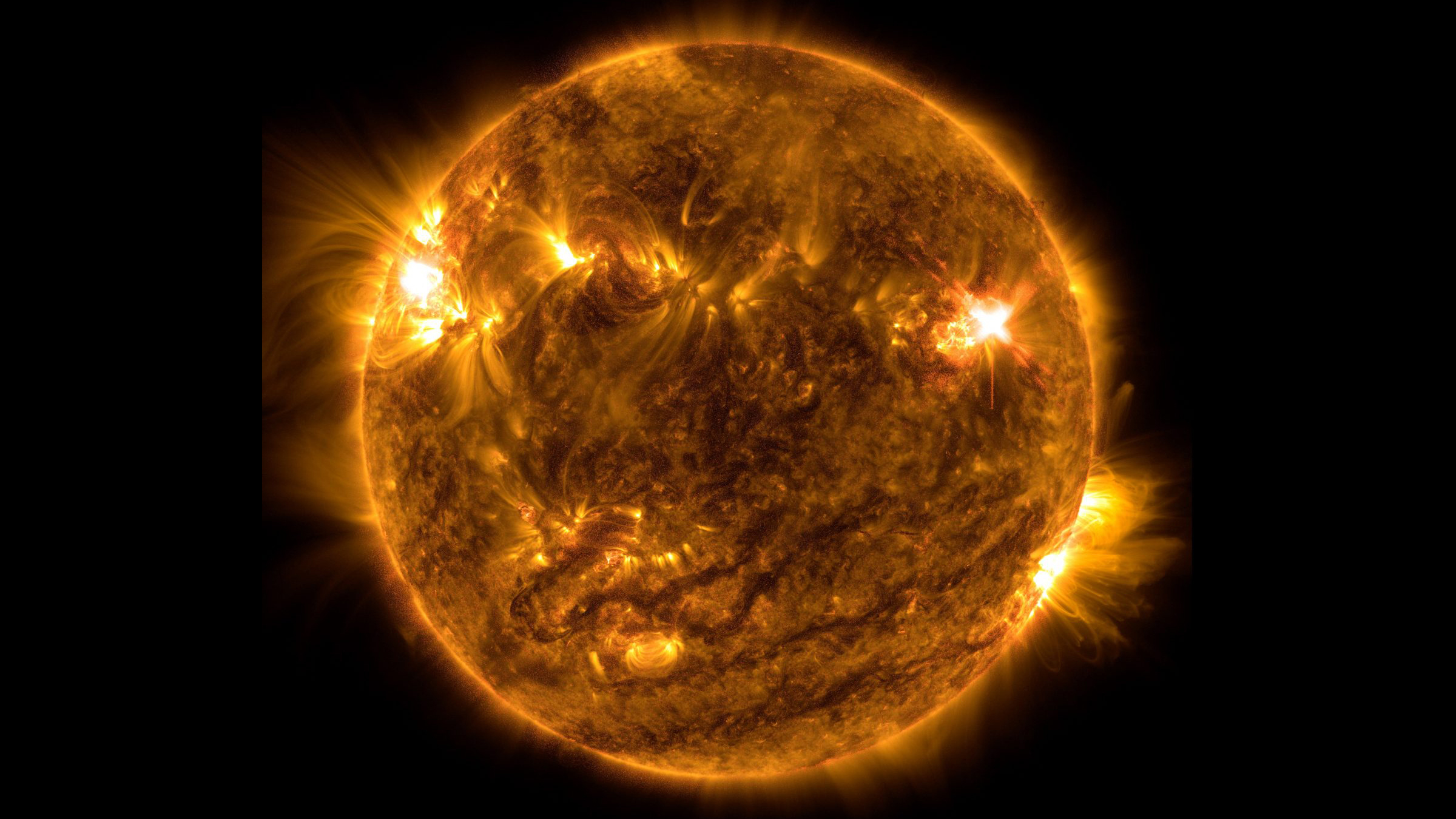What is nuclear fusion?
Nuclear fusion is the merging of two light atomic nuclei into one heavier one. If it can be harnessed on Earth, it could generate clean, limitless energy.

Nuclear fusion is the reaction that churns at the hearts of stars, in which two light atomic nuclei merge into a single heavier nucleus. Fusion produces very little nuclear waste, and no greenhouse gas emissions, which means it has long been touted as a potential clean alternative to conventional energy sources. But what drives this process? And could it ever become a viable commercial power energy source?
What is fusion?
Fusion occurs when two light atoms bond together, or fuse, to make a heavier one. The total mass of the new atom is less than that of the two that formed it; the "missing" mass is given off as energy, as described by Albert Einstein's famous "E=mc^2" equation.
Usually, atomic nuclei repel each other because they have the same charge. High temperatures, pressures, or both are required to overcome this repulsion. On Earth, temperatures in nuclear fusion reactors reach nearly six times those found in the core of the sun, according to Oak Ridge National Laboratory. At this heat, the hydrogen is no longer a gas but a plasma, an extremely high-energy state of matter in which electrons are stripped from their atoms.
Fusion differs from fission, which splits atoms and results in substantial radioactive waste, which is hazardous.
Fusion is the dominant source of energy for stars in the universe. It is also a potential energy source on Earth, if scientists can figure out how to get more energy out of the reaction than it requires to initiate it. When set off in an intentionally uncontrolled chain reaction, nuclear fusion drives the hydrogen bomb. Fusion is also being considered as a possibility to power crafts through space.
Nuclear fusion energy
The "Holy Grail" of clean power is to generate commercial energy from nuclear fusion reactions.
Scientists have pursued this goal for decades. Fusion is such an attractive alternative to existing energy sources because it produces little-to-no radioactive waste or greenhouse gas and requires relatively simple ingredients. Key to this dream of limitless clean power is producing more energy from the reaction than it takes to produce it.
In 2022, scientists with Lawrence Livermore National Laboratory's National Ignition Facility (NIF) announced that for the first time, a nuclear fusion core produced more energy than it consumed. The ignition facility uses laser beams to confine a plasma of deuterium and tritium, two isotopes, or versions, of hydrogen. But experts say a viable commercial fusion reactor is likely decades away. That's because to heat the plasma, scientists must draw energy from the electrical grid. So to make the reaction viable, the energy produced by the reaction must also account for the sizable amount of energy lost as electricity is converted to the light that powers the lasers.
Deuterium-Tritium fusion: The most promising combination for power on Earth today is the fusion of a deuterium atom with a tritium one to create a helium atom. The process, which requires temperatures of approximately 72 million degrees F (39 million degrees Celsius), produces 17.6 million electron volts of energy.
Current experiments with deuterium-tritirum fusion are ongoing at the the DIII-D National Fusion Facility in San Diego, California. The largest potential nuclear reactor, the ITER project in southern France, which is still years from completion, also uses these two isotopes to power its reaction. Unlike the NIF reactor, the ITER project uses strong magnets to steer the hydrogen plasma around a donut-shaped reactor, called a tokamak.
Deuterium is a promising ingredient because it is an isotope of hydrogen, containing a single proton and neutron but no electron. In turn, hydrogen is abundant in water. A gallon of seawater (3.8 liters) could produce as much energy as 300 gallons (1,136 liters) of gasoline.
Tritium contains one proton and two neutrons. It was produced in large quantities during nuclear missile testing in the 20th century, but its half-life is about 12 years, meaning half of the quantity decays in that time frame. Scientists at ITER have proposed making tritium in large quantities by bombarding lithium, an element found in Earth's crust, with neutrons.
Deuterium-deuterium fusion: Theoretically more promising than deuterium-tritium because of the ease of obtaining the two deuterium atoms and the higher energy yields it would produce, this method is also more challenging because it requires extremely high temperatures to work. Several test nuclear fusion reactors can reach temperatures around 270 million F (150 million C), according to ITER. However, a solely deuterium-deuterium reaction would require temperatures of at least 720 million to 900 million F (400 million to 500 million C), according to EuroFusion, a consortium of national fusion institutes located around Europe.
So far, the only facility capable of initiating the deuterium-deuterium reaction is the Joint European Torus (JET) facility, which has only achieved it fleetingly, according to EuroFusion.
Fusion reactions in stars
Proton-proton fusion: The dominant driver for stars like the sun with core temperatures under 27 million F (15 million C), proton-proton fusion begins with two protons and ultimately yields high energy particles such as positrons, neutrinos, and gamma rays. In order to achieve fusion as such low temperatures, stars rely on crushing pressures of more than 200 billion times those of atmospheric pressure on Earth, according to West Virginia University.
Carbon cycle: Stars with higher temperatures merge carbon rather than hydrogen atoms. In this process, stars begin with carbon-12 and walk through six different steps to produce a helium nucleus and another carbon-12 atom, according to the Swinburne University Centre for Astrophysics and Supercomputing.
Triple alpha process: Stars such as red giants at the end of their phase, with temperatures exceeding 180 million F (100 million C) fuse helium atoms together rather than hydrogen and carbon.
Additional resources
Read more about the fusion that powers the stars from NASA. This video describes how the largest nuclear fusion reactor is being built. And read more about the race to build such reactors in "The Star Builders: Nuclear Fusion and the Race to Power the Planet" (Scribner, 2021).
Sign up for the Live Science daily newsletter now
Get the world’s most fascinating discoveries delivered straight to your inbox.











